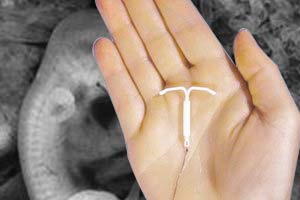
A Minnesota woman who received a Mirena® intrauterine device (IUD) in 2006 has filed a lawsuit alleging that the device was responsible for her ectopic pregnancy and other complications. The Mirena®, a hormonal IUD, works by releasing the hormone levonorgestrel while it is implanted in the uterus. According to recommendations, the device can be left […]
 A Minnesota woman who received a Mirena® intrauterine device (IUD) in 2006 has filed a lawsuit alleging that the device was responsible for her ectopic pregnancy and other complications.
A Minnesota woman who received a Mirena® intrauterine device (IUD) in 2006 has filed a lawsuit alleging that the device was responsible for her ectopic pregnancy and other complications.
The Mirena®, a hormonal IUD, works by releasing the hormone levonorgestrel while it is implanted in the uterus. According to recommendations, the device can be left in place for up to five years. The Minnesota woman received her IUD in April 2006 and initially it appeared to be in place and working properly. But in January 2009, the woman’s doctor couldn’t see the strings attached to the device, an indication that the IUD is still in place. A sonogram showed that the Mirena® IUD had perforated the woman’s uterine wall and also showed an ectopic pregnancy—a possibly life-threatening condition in which a pregnancy occurs outside the womb. The woman had to undergo surgery to retrieve the Mirena® IUD and a salpingectomy (removal of a Fallopian tube) to remove the ectopic pregnancy.
Parker Waichmann LLP filed a lawsuit on the woman’s behalf on January 4 in the Superior Court of New Jersey (Case No. MRS L-0060-13). The suit names Bayer Healthcare Pharmaceuticals, Inc. as the defendant, and alleges that the woman’s injuries are a direct result of Bayer’s negligent and wrongful conduct. The court filing also notes that this is not the first time Bayer has been accused of misrepresenting the Mirena® IUD’s benefits, while failing to adequately warn of the risks.
A petition was recently filed to consolidate a number of Mirena® lawsuits into a multidistrict litigation (MDL) in federal court in Ohio. As we’ve previously explained, an MDL is created when litigation involving a number of lawsuits contain common questions of fact. By centralizing the lawsuits in one court before one judge, pre-trial proceedings will be more efficient and duplicate findings will be avoided.


